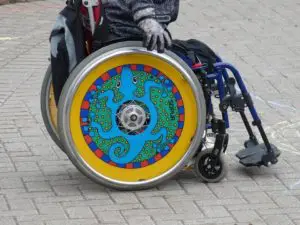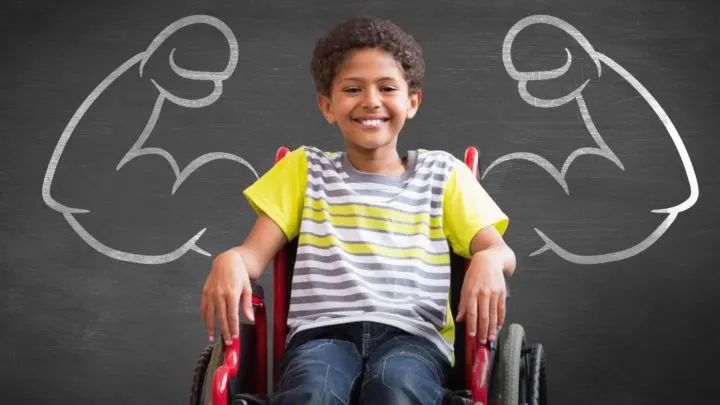If you’re wondering how to apply for disability for a child, you already know how costly and time-consuming it can be to raise a child with special needs. Fortunately, we’ve found help.
Your child may be eligible for Social Security benefits.
Children (under age 18) may be eligible for Supplemental Security Income (SSI) benefits. In order to qualify, they must meet Social Security’s strict disability guidelines. They must also come from families with little to no income or resources.
Does my child qualify for SSI?
In order to qualify, your child must meet a strict definition of disability. They must have “a physical or mental condition(s) that seriously limits his or her activities” and the condition must have already lasted (or be expected to last) at least one year (or result in death). Infants with a low birth rate can apply for presumptive disability before they reach 12 months old.

What childhood disabilities qualify for SSI?
The Social Security Administration maintains a listing of impairments that qualify for benefits. It is easier to apply for benefits if you meet one of these listings, so it is important to understand these categories before you apply for disability for a child.
The Social Security listing of impairments includes several categories. You can learn more about this here.
What if my child does not meet those criteria?
If your child does not meet any of these listings, the Social Security Administration can still evaluate your child’s disability. They do this by determining which listing is functionally equal to your child’s condition.
Disabilities are evaluated based on how they affect your child’s ability to:
- Acquire and use information
- Attend to and complete tasks
- Interact and relate to others
- Move around and manipulate objects
- Care for themselves
- Enjoy health and physical well-being

What information and evidence will I need to file my claim?
Filing a Social Security claim can be complicated and time-consuming. The more evidence you can gather before you begin the application process, the greater your chance for success will be. Remember that when you decide to apply for disability for a child, the burden is on you to prove that the child actually meets the requirements for benefits.
Medical Records
Medical records are critical. In addition to recent medical records and a current medication list, you will also need contact information for every provider that your child has visited over the last year. Include the name, address and phone number of each and every doctor, therapist, hospital or clinic that has provided care for your child over the last year. If you can gather a longer history, then do it! The farther back your records go, the better.
School Records
You will also need school records, if your child is school age. Prepare the names, address and phone numbers for all of the schools your child has attended for at least the last year. Include the names of any teachers, psychologists, counselors, speech or other therapists who have worked with your child. If your child has an IEP or IFSP for special education services, then you will want to obtain that information also. If possible, gather the records for your child’s entire school career and not just the most recent year.
Other Contact Information
Prepare the contact information of any other adults that have seen, interacted with or treated your child. If you have received community services, then be prepared to supply the names, addresses and phone numbers of any social workers or other professionals that have seen the child. The more witnesses and statements you can gather, the better!
This contact information is crucial because it allows the Social Security office to verify your claim.
Additional Paperwork
In order to apply for disability for a child, you will also need to gather extensive paperwork. At the very least, you should have an original or certified copy of the child’s birth certificate and Social Security card. If the child was not born in the United States, you will also need to prove that the child has lawful US citizenship or lawful alien status. You will also need proof of income and current resources for the entire household. A household is defined as the immediate relatives who live in the home and help provide support for the child.
The income statements will need to be current, as of today’s date. Proof of income can be in the form of pay stubs, self-employment tax returns, child support statements, unemployment or other benefit award letters.
You will also need to prove that your family doesn’t exceed the maximum resource limits. To do this, you will need to provide current bank statements, life insurance policies, certificates of deposit, stocks, bonds or other assets that you may own.

How do I apply for disability for a child?
To apply for Social Security benefits on behalf of a child, you will need to complete an Application for Supplemental Security Income and a Child Disability Report. You can complete the Child Disability Report online, which explains the child’s disabling condition and how it affects their ability to function. However, you can only complete the Application for Supplemental Security Income over the phone or in person at a Social Security office.
What happens when my child turns 18?
If your child is approved for SSI as a child, then they will be re-evaluated as an adult when they turn 18. Childhood disability evaluations focus on functional ability, whereas adult evaluations focus on the work ability.
Children who meet a disability listing are more likely to seamlessly transfer to adult benefits. This is because the evaluation criteria are so similar. The exception is for eating disorders, because there are no adult listings for eating disorders.
Children who do not meet a disability listing may have a harder time proving that they are unable to work due to their disability. However, the Social Security office will evaluate their functioning in educational programs, community experiences, work-related stress and other factors.

